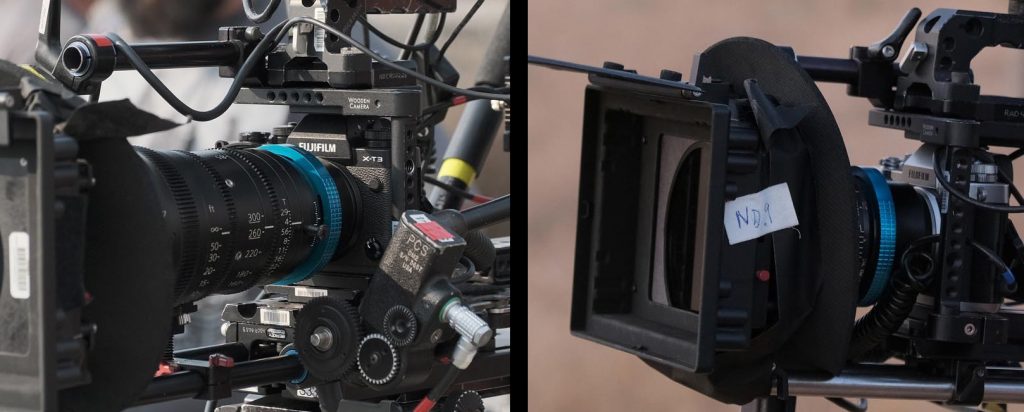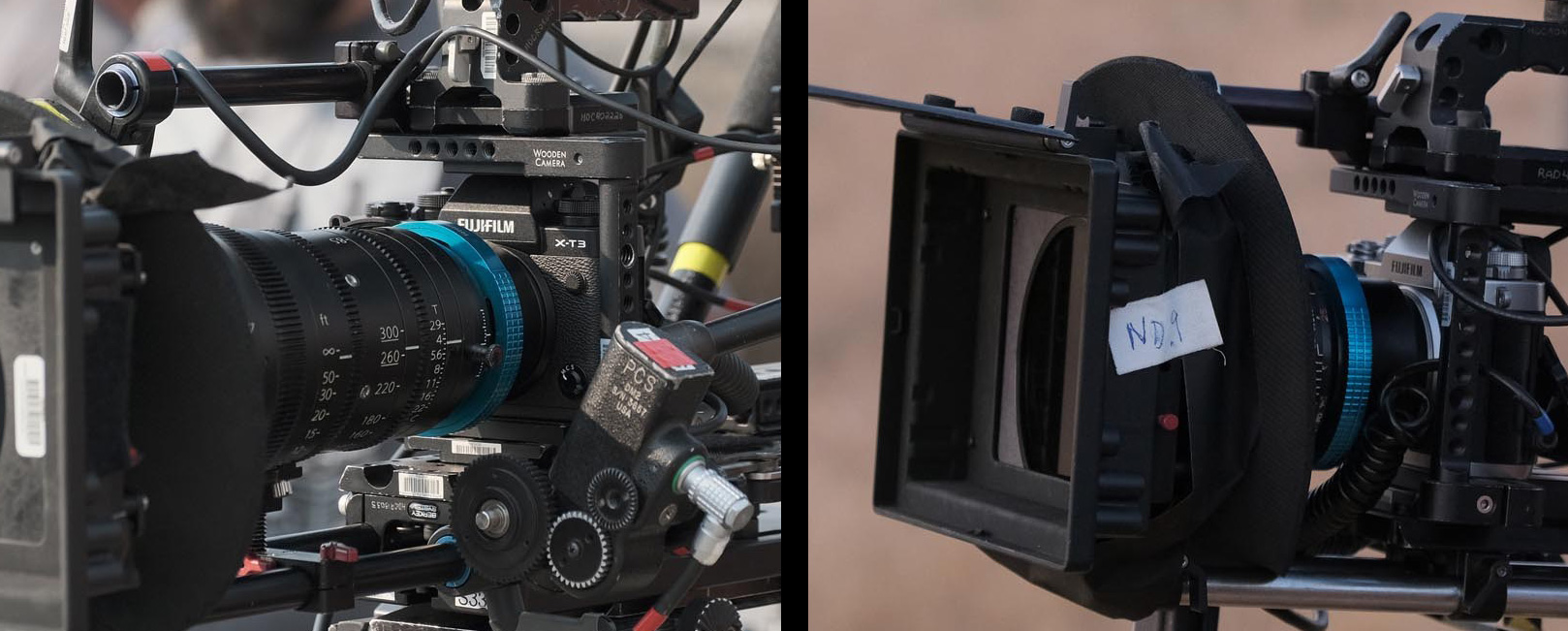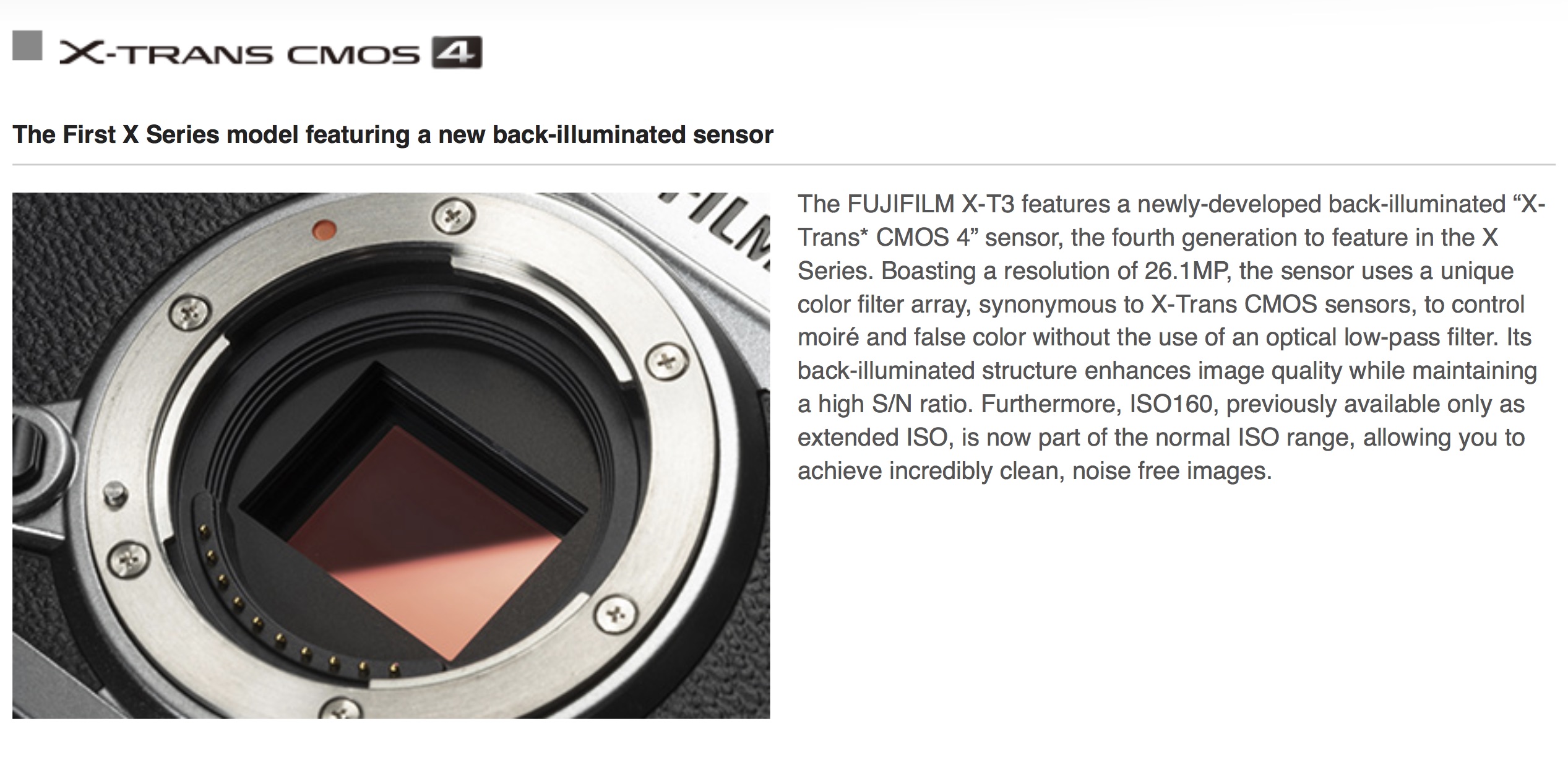Check out the behind the scenes on Black Swan’s Matthew Libatique ASC Fuji X-T3 shoot here at FDTimes. Great read!

Back in June I reported on the joint sensor development between Fuji and Samsung. You can read all about that ISO Cell project here. This was 100% not a rumour.
Now you may look at the X-T3 and wonder where the new 26MP sensor comes from.
I am inclined to believe it’s from Samsung and would very much like to see a tear-down.
Sony do not have a 26MP / 4K 60p 10bit sensor like this in any of their cameras yet or listed for sampling.
There’s quite a few discussions on South Korean camera forums about Samsung entering the sensor supply chain to compete with a dominant Sony. Samsung are already doing this in small chip arena for smartphones but not yet in the larger APS-C and full frame market.
Samsung open to new camera system, joins forces with Fujifilm
Mirrorless camera sales are rocketing at the moment, so does Samsung’s LSI business want a piece of the action?
The X-T3 shoots 4K 60p of course, with FAR less rolling shutter than Sony’s previous best APS-C sensor in the A6500. Although Samsung regrettably left the camera market after the NX1, the Fujifilm X-T3 may very well be like an NX2 inside.
It’s a BSI sensor for the first time in a Fuji coupled to a quad core processor 4x the speed of the previous one.
This is almost a completely new technology compared to what Fuji used previously, building on what Samsung did with the NX1.
It seems as if Samsung looked at the best APS-C sensor from Sony and said “we can beat that”.
The image processor attached to it is also very reminiscent of Samsung, capable of H.265 like the NX1 and a new “completely rewritten” autofocus engine. The NX1 had dedicated hardware processors for AF as well as phase-detect “sensels” on chip.
This South Korean rumour says the X-T3 sensor was designed for an NX2, and ended up being sold to Fujifilm.
Other rumours say Pentax and Panasonic will be customers of Samsung full frame sensors.
We don’t know if any of this is true or not, but the speculation makes total sense. I don’t think the camera companies are 100% comfortable just having one sensor supplier shared between all of them. Panasonic, Olympus, Nikon, Canon and Pentax have all relied on Sony for manufacturing at some point, some take off-the-shelf sensors directly from Sony and some are custom designs made with Sony’s current circuit and architectural capabilities at Sony fabs.
If there is indeed a Samsung APS-C sensor in the Fuji X-T3, it makes a new era in the camera industry and could result in groundbreaking capabilities. The sensor is said to be 70% of the cost of the Sony equivalent part and 1.5x faster.
There are rumours that the Panasonic full frame mirrorless camera uses an 50MP 8K full frame sensor from Samsung. Wouldn’t that be incredible?
As it happens, Samsung have already announced an 8K product strategy. It makes sense for Samsung to encourage the production of an 8K camera for consumers, because they’re soon to bring out a range of 8K QLED TVs according to Nikkei. Sony and Panasonic are said to be holding back on 8K TV production as they consider it “a hard sell” (I am not totally sold on the benefits for home TVs either) but Samsung and LG are going ahead. Panasonic on the camera side has said they will introduce an 8K camera by 2020. For that resolution to work cleanly, ideally you need a full frame sensor rather than Micro Four Thirds. We are talking at least 45MP in 3:2 aspect ratio.
For reference the Nikon Z7 full frame sensor at 46MP is 8.2K.






